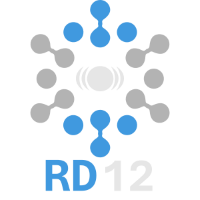Conveners
Biological Studies Affected by Radiation Damage: BIO 1
- Kunio Hirata (RIKEN)
Biological Studies Affected by Radiation Damage: BIO 2
- Edward Snell (Hauptman-Woodward Medical Research Institute)
The French protein crystallography beamline BM07-FIP2 at the ESRF enables both cryogenic and room-temperature studies on single crystals, with precise control over the deposited X-ray dose thanks to a large, homogeneous top-hat beam. [1] In addition, its sample environment allows for easy integration of the EMBL/ESRF microspectrophotometer [2], enabling in crystallo UV-Visible absorption and...
Protein–inhibitor crystal structures aid medicinal chemists in efficiently improving the potency and selectivity of small-molecule inhibitors. It is estimated that a quarter of lead molecules in drug discovery projects are halogenated. Protein–inhibitor crystal structures have shed light on the role of halogen atoms in ligand binding. They form halogen bonds with protein atoms and improve...
The molybdenum enzyme arsenite oxidase (Aio), is a promising biocatalyst for the detoxification and biosensor applications [1]. So far, its structural characterization and complete reaction mechanism understanding has been limited to artifactually reduced states of the Mo cofactor (Moco) caused by X-ray photoreduction (PDB 1g8k, 4aay) [2-4].
Here, we present the first crystallographic...
Ever since the first systematic study of radiation damage in macromolecular crystallography, diffraction intensity decay has been useful as one of the metrics to monitor the progression of radiation damage in reciprocal space for room temperature [1] and cryo-cooled (~100 K) [2] crystalline samples. Various models have been used to parameterise the functional form of the intensity decay...
![enter image description here][a]
Lytic polysaccharide monooxygenases are enzymes [1] binding their active-site copper through the characteristic His-brace motif shown above including two His – one N-terminal – and often also a Tyr. The reaction cycle starts with reduction of the resting state Cu(II) to Cu(I) – in the laboratory usually using ascorbate as small molecule reductant. Despite...
Urate oxidase (UOX) is the archetypal cofactor-independent oxidase, catalysing the O₂-mediated degradation of uric acid in many organisms. Previously, we demonstrated that the first step of this reaction is a dioxygenation reaction, forming 5-peroxyisourate (5-PIU) as an intermediate [1]. We also showed that 5-PIU is highly sensitive to radiation: during conventional single-axis X-ray...

